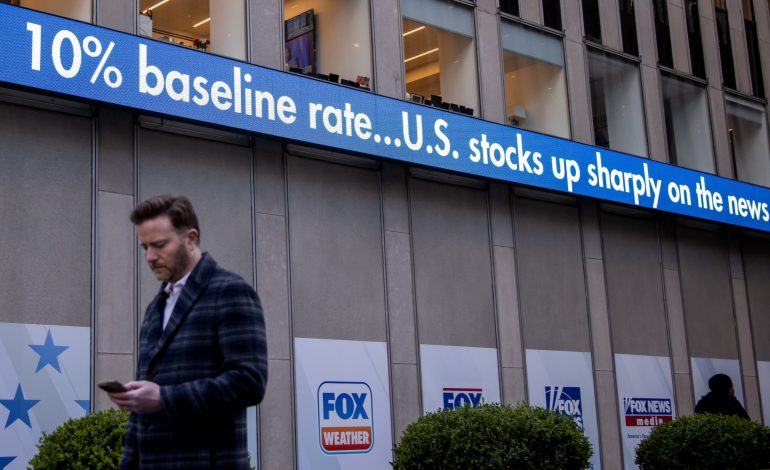The United States has implemented a significant tariff hike on Chinese imports, raising the rate to 125%, even as President Donald Trump announced a 90-day pause on higher tariffs for most other trading partners.
The move has deepened trade tensions with China, prompting concerns about global economic stability and potential retaliatory measures from Beijing.
In response to the US tariff escalation, China has imposed an 84% tariff on American goods, signaling that the ongoing trade dispute remains far from resolution. The latest round of tariffs comes as Chinese policymakers consider economic stimulus measures to counteract the impact of US trade restrictions.
Financial markets reacted with mixed signals. While Asian stocks rallied alongside global markets due to relief over the broader tariff pause, currency markets saw increased demand for traditional safe-haven assets like the Japanese yen and Swiss franc. Meanwhile, the Chinese yuan weakened in offshore trading, reflecting investor caution about Beijing’s next steps.
The bond market saw significant movements, with US Treasury yields falling in Asian trading as investor risk appetite returned. Market analysts noted that the 125% tariff on Chinese goods would likely weigh on economic growth, not just in China but globally.
Goldman Sachs revised its forecast for China’s economic growth in 2025, lowering it from 4.5% to 4.0%, citing the potential economic drag from the ongoing trade dispute. The investment bank also adjusted its 2026 forecast downward to 3.5%. While some economists expect China to respond with further fiscal stimulus, others warn that such measures may not fully offset the negative effects of the tariffs.
The technology sector has been particularly affected by the tariff shifts. Taiwan Semiconductor Manufacturing Company (TSMC), a major supplier to Apple and Nvidia, reported a surge in orders as companies rushed to stockpile chips ahead of the tariff implementation. The semiconductor industry remains closely watched as companies navigate supply chain challenges and shifting trade policies.
Energy markets have also been impacted. Oil prices saw sharp declines earlier in the week, with Brent crude falling below $60 per barrel at one point. The downturn has raised concerns for oil-exporting nations, particularly within OPEC+, as revenue pressures mount amid trade uncertainties.
China’s currency and trade policies will play a crucial role in determining how markets evolve in the coming months. Analysts are closely watching whether the People’s Bank of China (PBOC) allows further yuan depreciation to counteract the impact of US tariffs or if Beijing chooses to implement additional economic stimulus.
Meanwhile, the European Union and other trading partners continue to monitor US trade policies closely. While Trump’s 90-day tariff pause has provided temporary relief for many countries, uncertainty remains over future trade negotiations and the long-term effects of heightened US-China tensions.
As the global economy adjusts to the latest US tariff measures, market participants remain cautious about potential further escalations. China has already filed a complaint with the World Trade Organization, criticizing the US tariffs as “reckless.” Some analysts argue that the latest developments could push China to take more aggressive measures in the trade dispute.









The latest news in your social feeds
Subscribe to our social media platforms to stay tuned